Portrait: Pietro Lura
Player on a rough field
Pietro Lura has bold plans. As head of the new "Concrete & Asphalt" lab at Empa, he is committed to durable materials that are subject to ever-changing external conditions. Climate change and the scarcity of resources require a fundamental rethink in the field of building materials – and Lura is keen on laying the foundation for this massive transformation.
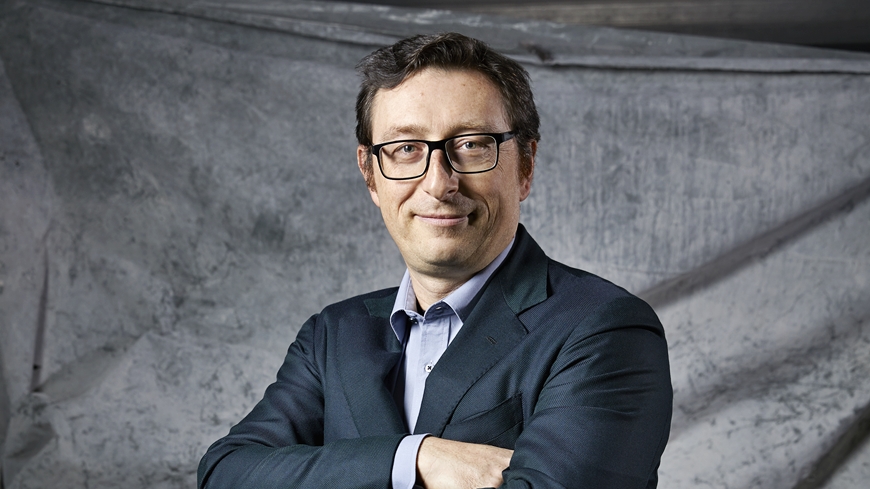
Once conceived for eternity, building materials such as concrete and asphalt must now keep up with the times. Both products face similar challenges, such as an environmentally friendly, resource-efficient production and significantly lower CO2 emissions. Pietro Lura, who heads the new "Concrete & Asphalt" lab at Empa, has made this transformation his mission. The research activities of his team – cement chemistry, concrete technology, asphalt and road construction – thus fit perfectly with the objectives of Empa's research focus area, "Sustainable Built Environment". After all, the quality of our built environment is an essential factor for a sustainable society. This includes high-quality and at the same time affordable buildings as living and working space, modern transportation networks and a reliable supply of energy, water and information.
Not an easy task when you consider that concrete and asphalt, with an annual demand of over 4.5 billion tonnes, represent the lion's share of all materials used worldwide. Admittedly, this enormous quantity accounts for a large proportion of global CO2 emissions. "But that's precisely why optimized material properties directly translate into an enormous reduction in the CO2 pollution caused by these building materials," explains civil engineer Lura.
It's all about the team
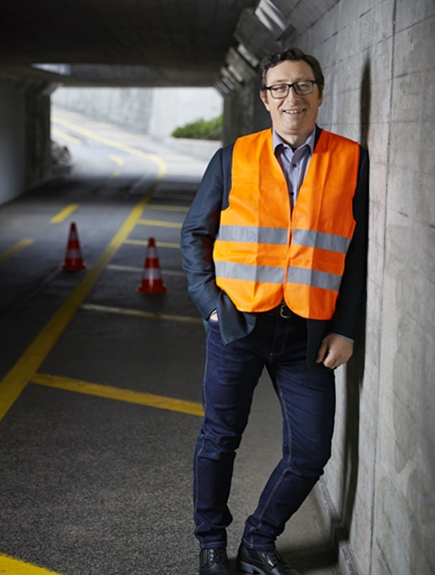
In any case, no task is too big for the researcher, who has been working at Empa for twelve years and holds a titular professorship at the Institute for Building Materials at ETH Zurich since 2011. And this was already apparent long before he decided on a career: Basketball, of all things, is something the not exactly above-average sized Lura enjoys playing passionately in his free time. And after a humanistic school education, he was drawn to engineering where he distinguished himself at universities in Italy, the Netherlands, Denmark and the US.
And this is exactly how Lura sees his task at Empa: In the small country of Switzerland he works in a large field of research with enormous international competition. "It's all a team effort," says Lura. As in team sports, the synergies within the team are important. With its research expertise, its approximately 40-member lab has a USP within the Swiss research landscape and is therefore highly relevant to decision-makers such as the Federal Roads Office (FEDRO). Cooperation with industrial partners and research institutions on an international level is also already well established.
"Big Data" for building materials
Thematically, there are plenty of synergies within concrete and asphalt research because both building materials are confronted with similar challenges. Central topics include the use of alternative ingredients and previously unused secondary raw materials from industrial processes as well as the implementation of efficient recycling processes.
Cement and bitumen, the binding agents on which concrete and asphalt are based, have indeed been used since ancient times. Today, however, research is breaking completely new ground in order to analyze the chemical properties of these highly complex materials, to optimize construction materials or even to equip them with completely new properties. Both fields rely on the latest methods, for example from digitalization (artificial intelligence, machine learning, big data and computer simulations), manufacturing technology (additive manufacturing) and the field of material characterization. "Our goal is to implement the principles of recycling management by developing new composite materials, enabling the cross-recycling of asphalt and concrete, and analyzing alternative binders," says Lura, adding: "An exciting task in a globally ever-growing market.
Concrete as social identity
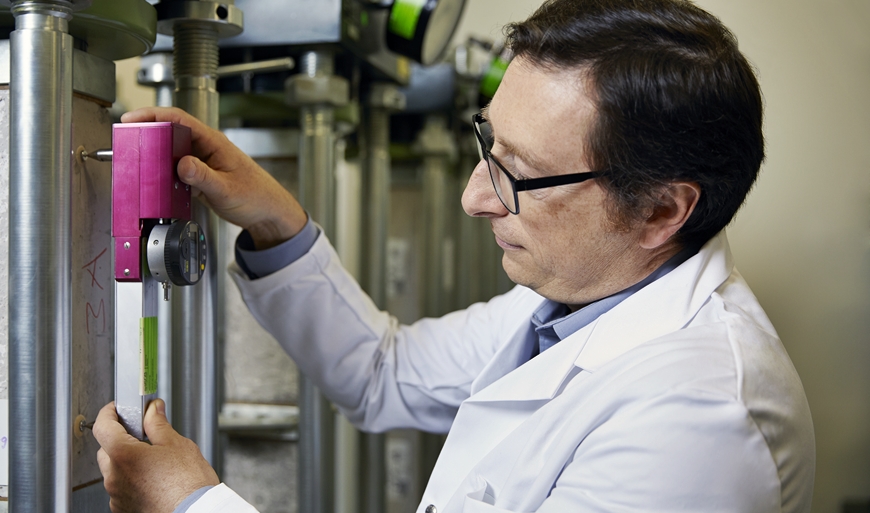
For some, concrete and asphalt may be coarse, shapeless building materials whose fascination is not apparent at first glance. For Pietro Lura, on the other hand, this fascination is obvious: Concrete and asphalt are much more than inexpensive, robust materials. They act as "binders" in our society by bringing people together on roads. They create the entire infrastructure of the world on a large scale – and on a small scale, if privacy is given space with a home or a hospital room. In a world with rapidly increasing mobility and a widely felt globalization, building materials also form the physical basis, with which civil engineers and architects create a social identity and cultural localization of people.
Inventive spirit for new materials
As the father of three sons, the sustainability of his research is also a matter close to Lura's heart, which at the same time meets the requirements of the United Nations Environment Program (UNEP): New cement-based materials that are more climate-friendly and cheaper are to be developed and used immediately. The cement industry currently accounts for around seven percent of global CO2 emissions. However, this is likely to increase in future, as demand in Asia and increasingly also in Africa is growing, while production in Europe is stable. When Empa researchers work on the development of new cement- and bitumen-based materials, their aim is to produce less of the harmful climate gas – or even to banish CO2 from the atmosphere. Currently, around 700 kilograms of CO2 are released during the production of every ton of cement.
For Lura, driving innovation is a familiar concept, given his experience with inventions from the perspective of a patent examiner from his time at the European Patent Office in Munich. "This is a long-term strategy that will have a strong positive impact on the sustainability of the construction industry," he says. For instance, his team is investigating reduced burning temperatures and modified raw material recipes for building materials. Alternative ingredients such as blast furnace slags or waste products from the electronics industry are being screened for their availability and material properties. And for concrete and asphalt, the recycling process for demolished buildings and road surfaces can still be significantly optimized. To ensure that such approaches do not end up as niche products, new eco-building materials must ultimately meet the same requirements as conventional products, for example in terms of durability and strength.
And in yet another area, Lura sees its activity as a "binder": connecting research with the public. For example, he was editor-in-chief of the renowned technical journal "Materials and Structures" for many years. But Lura goes one step further, because he has always advocated the principle of "open access", i.e. free access to the results of publicly funded research. Researchers should be connected to the world, and the world should have insight into their research. Lura: "It's important to make advances in the scientific community available to the public."
As head of a rather large lab, the researcher certainly misses doing research himself; this is usually his team's task. Nevertheless, Lura stays on the ball when he contributes his ideas and sees them grow into new experiments, technologies or material compositions. It is an exciting time for him to see how globally important decisions for the future of the construction industry are about to be made.
Prof. Dr. Pietro Lura
Concrete & Asphalt
Phone +41 58 765 41 35
| Audio |
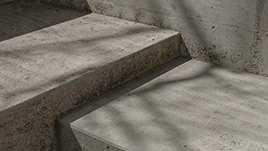
Empa researcher Frank Winnefeld talks about trends in the industry to develop circular concrete products and research on CO2-negative cement. Radio program on SRF1, Trend, January 22, 2021 (in German), 16:39 min
| Video |
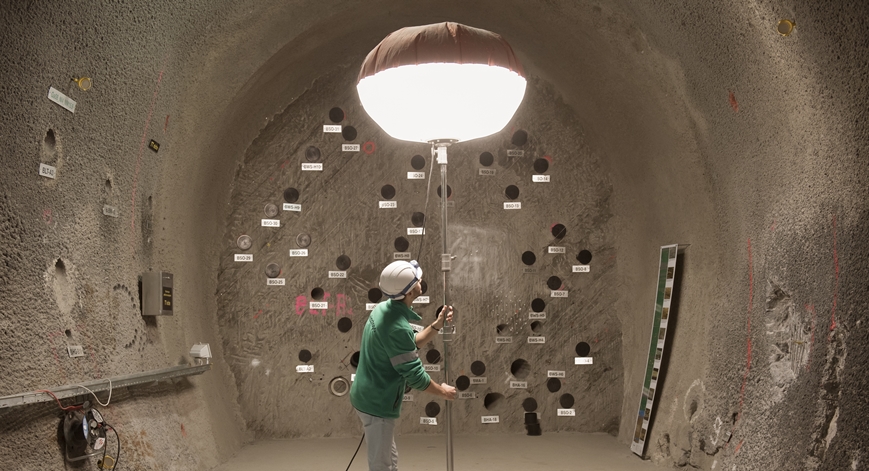
Radioactive waste repository
Modeling eternity in the rock laboratory
Cement is one of the key materials for the safe storage of radioactive waste. What is needed is an almost infinite durability of the containers. Empa researchers are therefore analyzing material systems that can handle this task. More. (Image: Pierre Montavon)

Food technology
Drying fruit with ionic wind
If fruit or vegetables are dried with heat, nutrients can be destroyed and flavors can be reduced. This is why non-thermal drying of food – i.e. without heating – is preferred by the industry. Among other things, fans are used for this purpose. A new drying process developed at Empa using ionic wind promises to make the non-thermal drying of food much more energy-efficient, faster and even gentler. More.
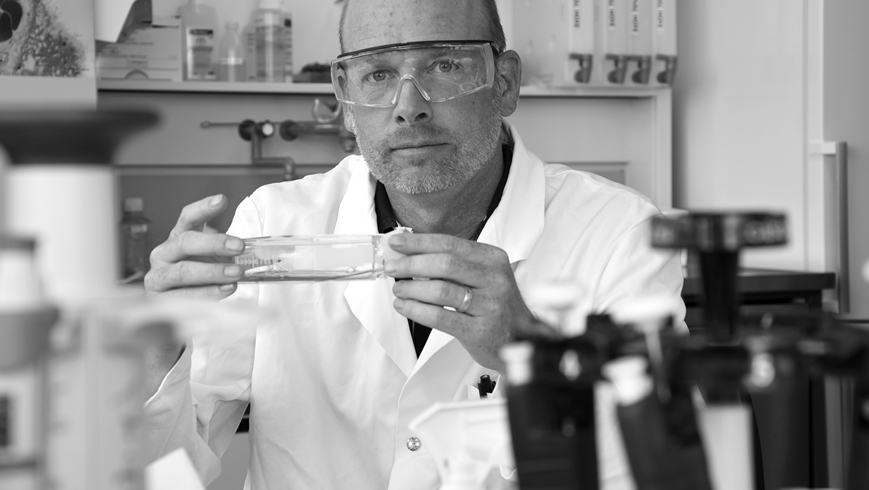
COVID-19 research at Empa
"These results are crucial for the future corona vaccination strategy"
Efforts are being made worldwide to combat the new coronavirus SARS-CoV-2. Vaccines and protective masks are of prime importance. Empa researcher Peter Wick, Head of the Particles-Biology Interactions Laboratory in St. Gallen, talks to Empa Quarterly about recent antibody studies, which are crucial for the development of a COVID-19 vaccine, and the next generation of textile protective materials that inactivate or even kill corona viruses. More. (Image: Empa)






